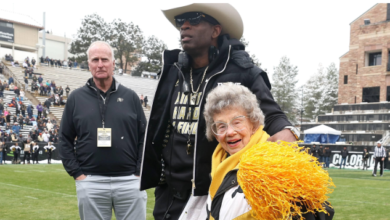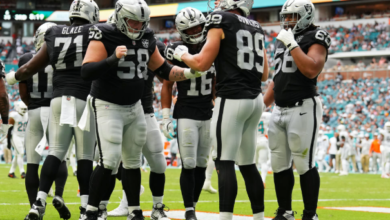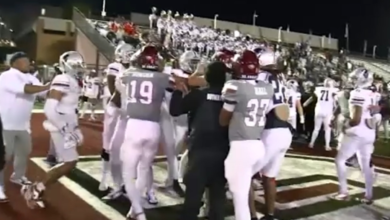Charley Trippi, only NFL Hall of Famer with 1,000 passing, rushing and receiving yards, dies at 100
Charley Trippi, a man whose NFL accomplishments will almost certainly never be replicated, died Wednesday, his alma mater Georgia announced. He was 100 years old.
Inducted into the College Football Hall of Fame in 1959 and the Pro Football Hall of Fame in 1968, Trippi was among the brightest football stars of pre-Super Bowl era. Saying he was multi-talented was an understatement — he saw time as a quarterback, halfback, defensive back, punter and kick returner in the pros.
Trippi won a national championship at Georgia in 1942 and SEC Player of the Year honors in 1946, with an interruption in between due to his service in World War II.
Also a legitimate MLB prospect during his time with the Bulldogs, Trippi ultimately chose football over baseball when he was selected first overall in the 1945 NFL draft by the Chicago Cardinals (known these days as the Arizona Cardinals). Per the Pro Football Hall of Fame, Cardinals owner Charles Bidwell lured the star with a four-year, $100,000 contract, the largest deal football had seen at that point.
Trippi saw immediate prominence as a rookie in what was called the “Million Dollar Backfield,” as evidenced by an absurd stat line in 1947 of 401 rushing yards, 240 receiving yards, 49 passing yards, 321 kick return yards, 141, punt return yards and 59 interception yards. It was a different game back then.
That rookie season culminated in a star-making game in the 1947 NFL championship game, when Trippi scored a 44-yard touchdown run and a 75-yard punt return.
Trippi led the NFL in all-purpose yards, a stat basically built for him, in each of the next two seasons while also handling some punting duties. His stardom continued into his 30s, making Pro Bowls in 1952 and 1953, before his retirement in 1955.
At the time, Trippi was the all-time NFL leader in total yards by a player, and remains the only Pro Football Hall of Famer with at least 1,000 passing, rushing and receiving yards. He was later named to the NFL’s 1940s All-Decade Team and remains one of only four players to have his number retired at Georgia.
[ad_2]
Source link





